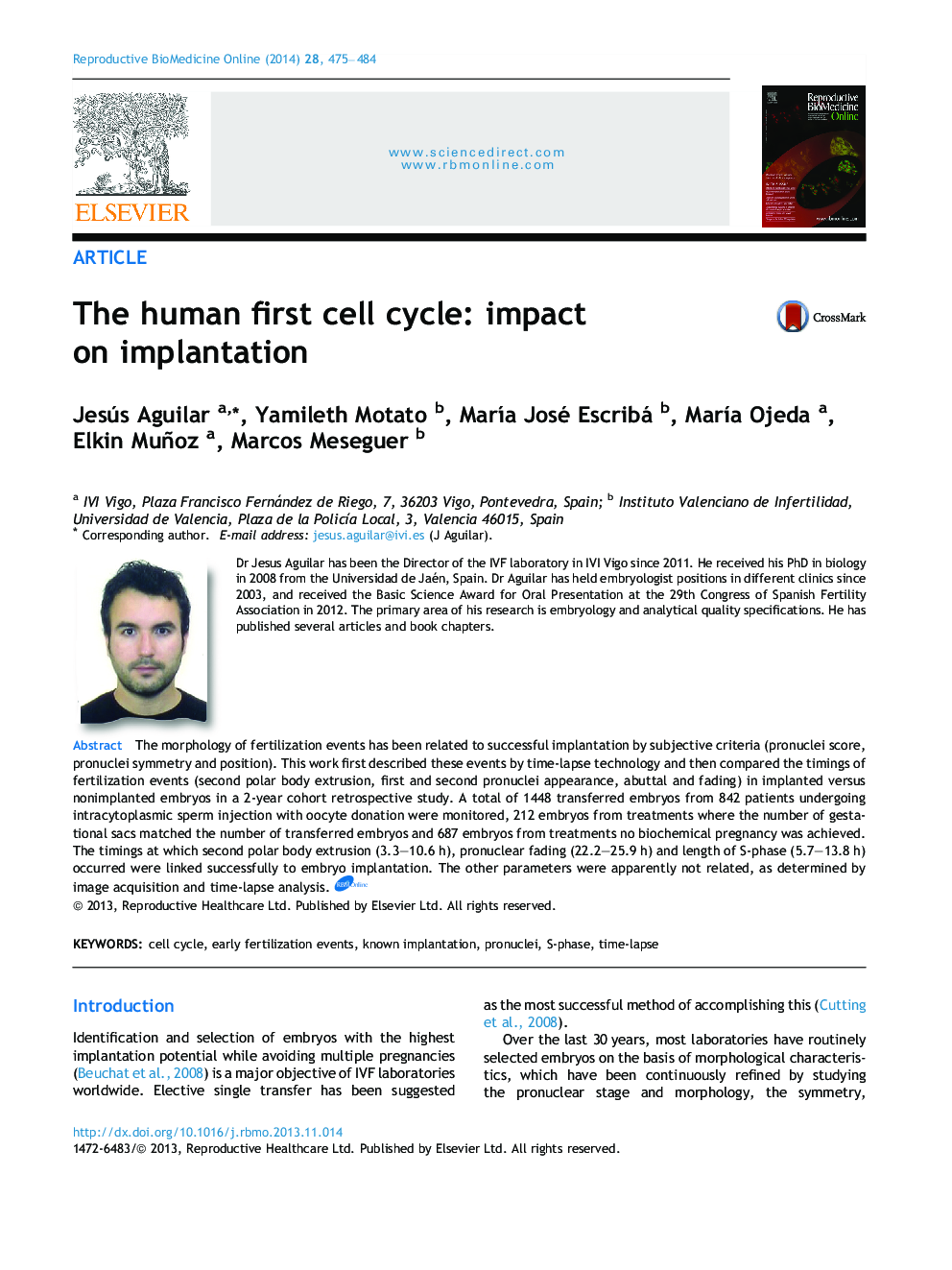| Article ID | Journal | Published Year | Pages | File Type |
|---|---|---|---|---|
| 3970201 | Reproductive BioMedicine Online | 2014 | 10 Pages |
The morphology of fertilization events has been related to successful implantation by subjective criteria (pronuclei score, pronuclei symmetry and position). This work first described these events by time-lapse technology and then compared the timings of fertilization events (second polar body extrusion, first and second pronuclei appearance, abuttal and fading) in implanted versus nonimplanted embryos in a 2-year cohort retrospective study. A total of 1448 transferred embryos from 842 patients undergoing intracytoplasmic sperm injection with oocyte donation were monitored, 212 embryos from treatments where the number of gestational sacs matched the number of transferred embryos and 687 embryos from treatments no biochemical pregnancy was achieved. The timings at which second polar body extrusion (3.3–10.6 h), pronuclear fading (22.2–25.9 h) and length of S-phase (5.7–13.8 h) occurred were linked successfully to embryo implantation. The other parameters were apparently not related, as determined by image acquisition and time-lapse analysis.The morphology of fertilization events has been related to successful implantation by subjective criteria (pronuclei (PN) score, PN symmetry and PN position). Now we describe for the first time the same events by time-lapse technology and also compare timings of the fertilization events in implanted versus nonimplanted embryos in a 2-year cohort retrospective study, in which 1448 individual embryos from 842 patients undergoing ICSI with oocyte donation were monitored. Only embryos from treatments where the number of gestational sacs matched the number of transferred embryos (n = 212) and embryos from treatments where no biochemical pregnancy was achieved (n = 687) were included in the study (Known Implantation Data). The chronological pattern of fertilization events as well as other morphological features were recorded. The means of the timings of the pronuclei events were analysed in both groups. The timing of PN disappearance could be linked to successful embryo implantation, whilst the other parameters analysed were apparently not related, as determined by image acquisition and time-lapse analysis. However, further studies are needed to successfully apply these findings for embryo selection.
